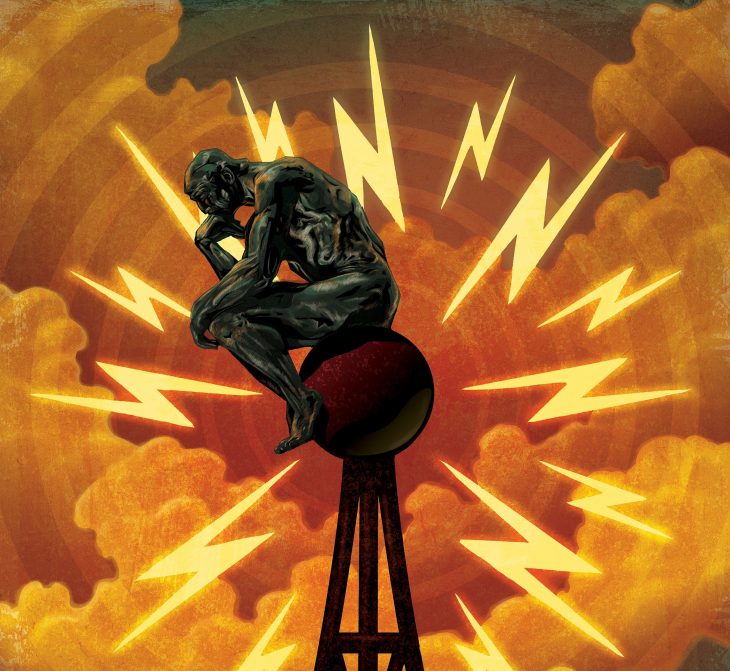
By Brad Danks and Luc Perreault
AS WE WRITE, BILL C-10, An Act to Amend the Broadcasting Act, is stalled in committee at clause-by-clause review. Conservative members of the Standing Committee on Canadian Heritage are asking the bill to be suspended pending a Charter analysis from the Department of Justice and an appearance from the Ministers of Justice and Canadian Heritage.
They say that an amendment made to the bill – removing a social media exclusion in proposed section 4.1 – is a substantial change and Canadians’ freedom of expression is at stake.
The Liberals say they are prepared to request a further Charter analysis (which is where the Justice Minister reviews a proposed bill and renders an opinion on whether it’s on side with the Canadian Charter of Rights and Freedoms), and to take into account any recommendations made, but only after the committee has reviewed all proposed amendments to the bill so that its final form is known. The Minister of Canadian Heritage has indicated the Government will be proposing additional amendments to the bill that are relevant to the removal of the social media exclusion.
It’s a bit of a mess and is calling into question whether the C-10 will make it through the legislative process before the summer – with all of the uncertainties surrounding how long the Liberal’s minority government will last.
Let’s get the heart of the issue: Are Canadians’ fundamental freedoms at stake due to the changes made to Bill C-10 so far? The answer to that question is, clearly, “no”.
Even without further amendments that may be proposed by the Liberals or others, Bill C-10, as it stands now, includes an absolute exclusion from regulation of individuals who upload content to social media services. This exclusion is found in new proposed section 2(2.1) of the Act, which reads as follows:
(2.1) A person who uses a social media service to upload programs for transmission over the Internet and reception by other users of the
service – and who is not the provider of the service or the provider’s affiliate, or the agent or mandatory of either of them – does not, by the
fact of that use, carry on a broadcasting undertaking for the purpose of the Act.
The language used is a bit obtuse. But if a person is deemed not to carry on a broadcasting undertaking then, in essence, the Broadcasting Act does not apply to that person. Those who use social media services and upload content are not broadcasting and therefore are not subject to the Act.
“The problem with former section 4.1 of the bill, which was taken out, was that it was overbroad.”
Who is subject to the Act? The section is also clear that the provider of the social media service and their corporate affiliates – i.e. Facebook, YouTube, Google and other site providers – are subject to the Act when they are engaged in broadcasting.
The problem with former section 4.1 of the bill, which was taken out, was that it was overbroad. The removed section would have excluded any application of the Act to “programs” on social media services such as YouTube because the uploaded programs originated with “users” of the service and not YouTube itself.
YouTube, we know, is one of Canada’s largest music streaming services. Except for the question of where the music content originates, when it acts as a music streamer it offers exactly the same “programs” (recorded music and music videos) and is functionally the same as other Internet-based music streaming services that are included in Bill C-10. It walks, talks and quacks like a duck, yet it would have had no obligations to Canadian broadcasting or programming even while services that do exactly the same thing would have such obligations. That does not make sense, so the government closed the loophole. Based on what YouTube does as a streamer, it should, at least, make a contribution to Canadian content development like other music services.
The bill is improved with the removal of section 4.1. YouTube, or some parts of it that have a material impact on the Canadian broadcasting system, should be subject to appropriate rules. One of the principles underpinning the amendments to the Act is that similar services should be treated similarly. Taking out 4.1 helps to achieve this aim.
“The CRTC already has the authority under the existing Broadcasting Act to regulate all types of broadcasting, whether it takes place on social media on the Internet or otherwise.”
Having included certain social media services under the Act, how do we ensure that expression rights of Canadians remain unfettered?
First, the Act is already clear persons using social media sites are not engaged in broadcasting, so they are not subject to the Act. This is actually a legislative exclusion for social media that previously was accomplished only through the CRTC’s Digital Media Exemption Order.
Second, before any social media site itself becomes subject to any type of obligation under the Broadcasting Act, the CRTC must set out the terms of that regulation. The CRTC is already subject to the constitutional requirement to respect Canadians’ freedom of expression. Besides, Bill C-10 is actually fairly limiting as to how and what the CRTC can require social media sites to do.
Third, all parties at the committee have the opportunity to bring forward amendments to Bill C-10 to circumscribe even further the CRTC’s mandate in relation to social media. We will have to see what happens at committee, which can hopefully get back to work without any delay.
Lastly, it is worth pointing out that, right now, the CRTC already has the authority under the existing Broadcasting Act to regulate all types of broadcasting, whether it takes place on social media on the Internet or otherwise.
Far from expanding the CRTC’s authority, Bill C-10 actually places more limits around that authority and gives clearer direction on how it should be exercised.
Brad Danks, is chief executive officer of OUTtv Network and Luc Perreault, is strategic advisor, Stingray.
Original artwork by Paul Lachine, Chatham, Ont.



